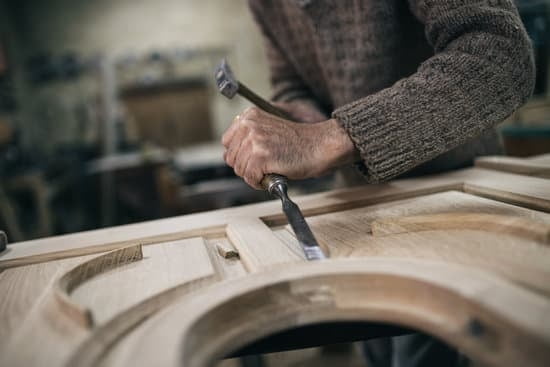Introduction to Fusion 360 for Woodworking CNC
Fusion 360 is CAD/CAM software that was specifically developed for 3D design and manufacturing processes, such as woodworking CNC. With Fusion 360, woodworkers can easily create 3D models and detailed drawings for their projects. It is specifically designed to increase efficiency and accuracy of design, so that the same models are always produced with the same great quality.
This software offers a wide range of features to help woodworkers bring out the greatest details in their products. It has an intuitive User Interface (UI) so you won’t waste time learning how to use it. As a dedicated product design software, Fusion 360 helps woodworkers quickly create accurate models which will involve fewer mistakes throughout the project lifecycle. From detailed 2D drawings to sophisticated 3D objects like sculptured surfaces – this tool can do it all! Plus, Fusion 360 also features advanced simulations and renderings to accurately portray your masterpiece in virtual space before bring it into physical reality on the CNC machine tools! Additionally, you can import & export file formats such as DWG/DXF and IGES/STEP files which makes it compatible with existing fixtures or templates found at most job shops or tooling areas.
In summary, Fusion 360 is one of the best CAD/CAM programs out there for woodworking CNC projects! It helps simplify complex designs while providing high-quality detailing that you can trust every time! Despite being relatively new compared to long standing rivals such as AutoCAD, this powerful program offers comprehensive functionality that meets the needs of modern woodworkers.
Benefits and Advantages
Fusion 360 for Woodworking CNC is powerful software that offers a variety of features to woodworkers. It includes tools for woodwork–shape creation, sculpting, and finishing, as well as options for creating complex models. It comes with CAM (Computer Aided Manufacturing) technology which optimizes manufacturing processes for cutting and machining wood precisely.
The cost benefits associated with Fusion 360 are numerous. Users only pay a low monthly subscription fee which makes it more affordable compared to other CAD/CAM software packages. Additionally, the package can be upgraded to multiple seats, making it accessible even in large enterprises.
Aside from cost savings, an additional advantage to using Fusion 360 is its intuitive environment. It simplifies the design process by offering features such inverting shapes or joining edges without requiring 3D modeling knowledge. Furthermore, the software can work on multiple platforms and it has access to a library of parts already built to create unique patterns and designs quickly over traditional means like carving manually.
Overall, Fusion 360 consolidates all aspects of woodworking from designing 3D models all the way through manufacturing processes into one affordable package setup which makes it very attractive for any small or large scale woodworking shop.
Setting up Your CNC Machine
Setting up a CNC machine for woodworking and executing projects with it cannot be done at once. You would need to follow a process or step-by-step guide of instructions that one might go through in order to get the best results from their CNC machine. One of the first things needed is to install, or update, Autodesk Fusion 360 – the software used for programming commands and operations from the machine, and control any design changes. After installing it on your computer, then plug in your CNC machine using a USB cable.
Once connected securely and the software is updated, some safety protocols should be implemented like ensuring proper insulation of wiring and covering it when not in use to prevent hazards of electric shock. Another important part in setting up your CNC machine correctly is leveling it properly. By positioning gantry screws accurately using a leveler box combined with measuring tools such as digital calipers allows you create an accurate blueprint prepared before setting up your router spindle so as to cut precisely into the material without damaging it. It’s also important to know how loose movements could ruin pieces made by dull router blades causing unnecessary tool breakage. Once everything looks good and secure, connect the power source before starting a program job or project; this prevents accidents during its operation due to insufficient connection from power cuts or delays.
The next step would include finding opening points for X/Y values by putting an edge finder against it then inputting this data based on numerical measurements realized previously during calibration procedures with accuracy specifications prior running jobs on machines; this will result in uniformed parts produced with better quality finishes making sure each piece is ready for sanding purposes even though many do not require further finishing details due to careful optimization beforehand which reduces processing times thanks of accurately generated paths resulting from custom programmed CAM operations within Fusion 360 software specifically tailored towards traditional woodworking jobs now commonly explored today with ever increasing uses found within autonomous CNC devices conveying modern automation capabilities never seen before until recently – ushering in a new era where programmed tasks can be made easier while producing better outputs than they were being manually operated like before!
Designing Parts
Using Fusion 360 for woodworking CNC projects can be an incredibly powerful tool. Here are a few tips and tricks to help you get the most out of your designs:
1. Take advantage of the sketching tool in Fusion 360. There are many different options that allow you to quickly and easily create patterns, lines, and shapes to use as the basis of your designs. The tools also let you extrude shapes, create fillets, chamfers, holes, pockets, etc. Utilizing these features makes it possible to have full control over the end result of your 3D part model.
2. Make sure to double-check any measurements before committing to a design. Check twist angles and smoothness of curves as well. Make sure you’re happy with how parts fit before going forward with machining them on a CNC machine.
3. Always remember that when working with wood on CNC machines there is always some allowance for material removal due to router bits being slightly wider than measurements taken from Fusion 360 models. If this isn’t accounted for it could lead to components not fitting together or being too small or large for what was originally intended.
4 . Designing something using a CAD model doesn’t guarantee success at the machine especially if dealing with tiny parts or intricate details like finger joints and dovetails require near exact alignment/fitment of one component against another which would make allowances necessary.. It’s still important to test run cuts against sample stock and post-process component assemblies instead of assuming cutting using CAD will yield desirable results first time around every time – different woods isolate different vibrations which can throw off part sizing/alignment so testing before actual machining is recommended when precision is critical in project outcome
Toolpath Generation
Fusion 360 for Woodworking CNC is a powerful tool to aid in the production of high-quality projects. One of its features, toolpath generation, automates the process of creating the passages along which cutting tools are directed when programming a CNC machine. Traditional workflows require the user to enter each point and line into the program by hand, an often time consuming process. Toolpath Generation simplifies this task by taking your design model and automatically creating paths which can be used to cut out a final shape or generate draft research for parts manufacturing. It easily integrates with CAD/CAM software packages, allowing you to turn a 3D model into a full-fledged project ready for production. Additionally, this ability saves money by eliminating time spent manually entering each point, allowing you to focus on what matters most-creativity and product perfection. With Fusion 360 for Woodworking CNC, you’ll have access to streamlined workflow processes to rapidly produce top tier projects that cater specifically to your customer’s needs.
Troubleshooting and Maintenance
Troubleshooting a woodworking CNC machine requires the user to be familiar with the machine, what it does and how it works. When problems arise, the user should first check for loose connections, as technical failure can often be caused by faulty electrical connections. If loose connections are found, they should be tightened or properly connected to restore full functionality of the CNC machine.
The user should also frequently inspect all mechanical components such as ball screws, couplings and bearings and make sure that they’re clean of any foreign objects like dust or debris which could lead to mechanical failures. It is also important to lubricate regularly all moving parts in order to maintain consistent performance.
Finally, if you are using Autodesk Fusion in conjunction with your woodworking CNC machine, it is important to regularly update your software and operating system in order to take advantage of enhancements and bug fixes made by the manufacturer. Doing so will keep your CNC machine running properly while avoiding potential diagnostics errors related to outdated software versions.
Project Examples
1. Outdoor Garden Bench: Create a one-of-a-kind outdoor garden bench that can be crafted with Fusion 360. Showcase the intricate details of the design by using dark wood or a combination of woods to create contrast.
2. Desk Organizers: Design beautiful desk organizers with Fusion 360 and customize them with intricate detail. Make sure to use the right materials and measurements, for lasting functionality and charm.
3. Tables: Design multi-purpose tables more efficiently than traditional methods by using Fusion 360 for Woodworking CNC. Exploit Fusion’s 3D modeling tools to add an eye-catching finish that is completely unique, every time you make a table.
4. Doors: Create wooden doors quickly and accurately with the help of Fusion 360 modeling tools, to get precision when it comes to profiled circular openings, curved parts and exact geometrical arrangements for the heavy wooden door frames.
5 Kitchen Cabinets & Shelves: With the advanced 3D modeling capabilities of Fusion 360, it’s easier than ever to design long lasting kitchen cabinets and shelves. Create detailed carvings or choose smooth surfaces that flow seamlessly throughout your entire kitchen space.
Conclusion
Fusion 360 for Woodworking CNC is a comprehensive and versatile software platform that allows users to create 3D models, machine them into parts, coordinate assembly operations and collaborate with team members. It provides powerful tools for creating complex geometry quickly and easily, and gives users the ability to create toolpaths specifically designed for woodworking machines. The software is well suited for the production of cabinetry, furniture, robotic operation on complex shapes, architectural components and more. Features include surface modeling capabilities, local/global editing options, parametric design history tracking and rendering capabilities. Additionally, Fusion 360 provides easy integration with other CAD/CAM packages in addition to being able to import/export numerous filetypes. The software also offers competitive pricing plans that scale up with increased usage, making it ideal for both small businesses and large industry professional makers alike.

Hi everyone! I’m a woodworker and blogger, and this is my woodworking blog. In my blog, I share tips and tricks for woodworkers of all skill levels, as well as project ideas that you can try yourself.





